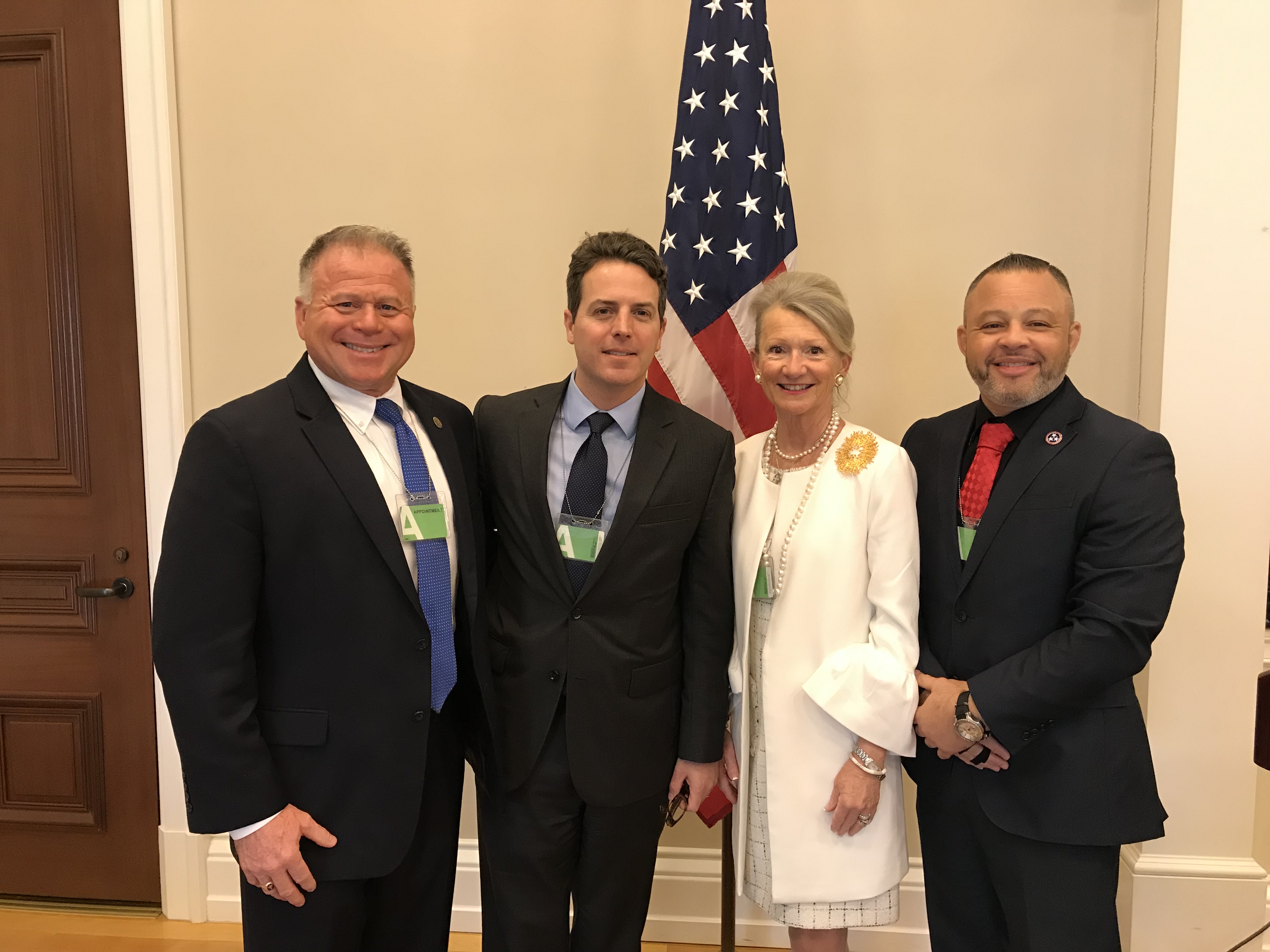The White House recently rolled out a new tool to help local leaders in rural areas respond effectively to the opioid epidemic. The State of Tennessee has been at the forefront of the rural opioid crisis and both Fourth Judicial District Circuit Court Judge Duane Slone and Administrative Office of the Courts Director Deborah Taylor Tate attended the Rural Community Action Guide’s official launch event in Washington, D.C.
The Rural Community Action Guide discusses the unique challenges that rural communities face in confronting the epidemic and contains a number of recommendations for community stakeholders looking to develop new and creative ways to address the issue. Many of these recommendations are based on the real-world examples of local leaders who have taken innovative steps to fight the epidemic.
Judge Slone has proven to be a leader in the struggle against the opioid crisis on both the local and national stage. His groundbreaking Tennessee Recovery Oriented Compliance Strategy (TN ROCS), a diversionary program geared toward those with substance use disorders who may not qualify for traditional recovery courts, has had enormous success in his East Tennessee community and has proven highly influential nationwide. TN ROCS features prominently in the Rural Community Action Guide as a model solution that can have a significant impact.
“Rural communities are the backbone of this nation, yet many of them have suffered terribly as a result of the opioid-driven addiction crisis,” Judge Slone said. “That suffering has been exacerbated by the relative lack of healthcare and treatment-related resources in many rural areas. That is why the Rural Community Action Guide is so important. It is a roadmap that leaders in rural communities can follow to overcome obstacles like these and mount a concerted response to the opioid crisis. The guide lets communities know there other places in the country going through the same struggles that have figured out ways to make a difference.”
There is considerable evidence that rural communities have been hit particularly hard by the opioid epidemic. For example, one study found that drug overdose deaths rose by 325 percent in rural counties from 1999 to 2015, compared to 198 percent in metropolitan areas. The Action Guide also shows how these communities lag behind in the amount of resources that can be utilized to assist those with opioid use disorder. For instance, the Action Guide cites one study which found that nearly one-third (29.8%) of rural Americans live in a county without a buprenorphine provider, as compared to just 2.2% of urban Americans. Buprenorphine is a key drug used in the medication-assisted treatment of opioid use disorder. Many rural communities also lack effective programs like Drug Courts.
As co-chair of the National Judicial Opioid Task Force and as a member of the Legal Services Corporation Opioid Task Force, Director Tate is well aware of these discrepancies and has spent a considerable portion of the past few years traveling the country to collect information about local opioid impacts and the tools developed to mitigate the opioid crisis.
“I think it is vital that everyone who is trying to overcome an opioid use disorder is given the best chance at success possible,” Director Tate said. “Just because you live in a rural area should not mean that you have to walk an even harder path to recovery due to a relative lack of available resources. The Rural Community Action Guide is just the tool that rural communities need to inspire hope and innovation. By following its recommendations, rural communities can take concrete steps toward a brighter future.”
The Action Guide’s many recommendations are based on a detailed look at some of the challenges that rural communities face in relation to the opioid crisis. For instance, one problem for many in rural areas is the “transportation gap.” This term refers to the lack of public transportation in many rural communities. This lack of transportation prevents many people with substance use disorder from being able to access treatment and recovery resources. The Action Guide offers several recommendations to help deal with this problem. They include forming a task force dedicated to the issue and asking representatives from the local and State transit office to serve on it, undertaking a community-wide effort to find out where the highest need for transportation is, and making transportation a fundamental part of a person’s recovery or treatment plan. There are numerous other sections in the Action Guide, dealing with a host of other topics including creating community coalitions, building new drug courts, and engaging faith-based communities.
Director of National Drug Control Policy James Carroll says that the Action Guide is just the latest step that the Executive Branch has taken to help rural communities besieged by opioids. He is optimistic that it will give community leaders the tools they need to forge ahead into a better tomorrow.
“As we step up to do even more to help small towns deal with the scourge of drug addiction, we are beginning to see signs of progress,” he said. “Yet we know there is still much work to be done. In arming local leaders with tools like the Rural Community Action Guide, we will continue to be relentless in our attack and our commitment to serve as a strong partner to rural America in this fight. Together, we can defeat the crisis of addiction and build strong, healthy, and drug-free communities now and for generations to come.”
On hand for the roll-out were: Brett Giroir, M.D., assistant secretary for health; Jerome Adams, M.D., surgeon general of the United States; Elinore McCance-Katz, M.D., assistant secretary for mental health and substance use; Brian LeClair, deputy administrator, Health Resources and Services Administration; Anne Hazlett, senior advisor for rural affairs, Office of National Drug Control Policy; and Betty-Ann Bryce, special advisor/rural lead, public health education and treatment, Office of National Drug Control Policy.



